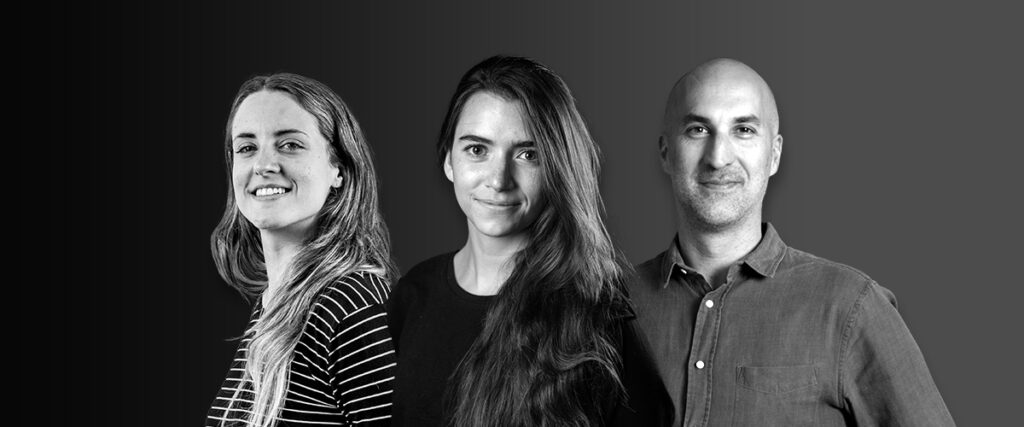The value of a design system, especially for large organizations like Sopra Banking Software (SBS), is increasingly evident. Why? They help create and maintain brand consistency, enhance cross-team collaboration, and streamline the user experience (UX).
Having a design system (DS) also reduces design and development time, meaning they’re cost-effective and enable a shorter time to market. But do you know what a DS is?
Find out with Silvia, Paula, and Álvaro, UX Designers who are part of SBS’s Central Design team. In this interview, they share the exciting challenges of creating a design system for SBS, and even compare it to a Lego factory!

What’s so special about design to you?
SILVIA: While aesthetics matter, true design transcends decoration when it directly meets practical needs. I love designing tools that address real problems, enhancing individuals’ lives and employees’ efficiency. For instance, I streamline software use by minimizing clicks.
ÁLVARO: What I like most about design is improving people’s lives through creative solutions, where form (aesthetics) follows function, but both are present.
PAULA: For me, design’s ability to inspire fresh thinking, exploration, analysis, and practical problem-solving is key. If you think about it, we’re surrounded by design decisions that make our lives easier – for instance, an ergonomic office chair.
What drew you to design for the finance sector?
SILVIA: Finance offers vast innovation opportunities. I was interested in simplifying the use of financial products and services for everyone, regardless of expertise. UX design can enhance and streamline anything from back-office tools to business-to-consumer (B2C) platforms.
ÁLVARO: I landed there seemingly by chance! But over time, I’ve realized the finance sector is spearheading innovation, and those who integrate design the earliest experience impressive results.
PAULA: I wanted to design for the financial sector because of its growing commitment to digitalization and innovation over the last five years. I see designing financial products (both external and internal) as a significant responsibility, because it has a substantial impact on the user experience, which is both challenging and motivating. I consider it an essential sector for every UX/UI designer to experience in their career.
Your main role is to craft the SBS Design System. What is a DS exactly?
SILVIA: A design system is a comprehensive reference repository of guidelines, components, and patterns. They’re created and organized to ensure consistency, efficiency, and scalability in the design and development of products and services.
PAULA: The SBS Design System includes various key elements: design principles, a style guide (typography, color palette, iconography, layout, and grid system), components, and standardized patterns and templates. It also contains a consistent information architecture, accessibility guidelines, comprehensive documentation, testing and quality assurance, and a system for version control.
How would you explain it to a 6-year-old child?
PAULA: A DS is like the Lego factory: We set the rules, building blocks, and colors, and then you can do whatever you want with those three pieces.
What and who is a design system for?
SILVIA: A good DS serves as a central resource for designers, developers, and other stakeholders. It helps them maintain a cohesive and unified visual and functional identity across various platforms and user interfaces.
ÁLVARO: The value of a design system is more and more evident. They help maintain brand consistency, reduce design and development time, improve collaboration between teams, and enhance the user experience by providing a unified and polished look and feel.
PAULA: On top of that, design systems evolve over time, adapting to changing trends and user needs.
Why is a design system crucial for SBS?
ÁLVARO: SBS has a wide range of independent products resulting from company acquisitions. Having a design system is cost-effective and allows a shorter time to market. It also helps teams work efficiently, building more consistent and higher-quality digital solutions across platforms.
SILVIA: The reasons Álvaro outlined are precisely why we introduced the SBS Design System for Product Design teams in January 2023.
How far have you got since the launch?
PAULA: We’re already defining more complex components (organisms, templates, pages, and guidelines) to define common standards for all SBS products.
ÁLVARO: Our design system evolves with the needs and feedback of the Product teams – it’s an iterative process that never ends.
What does a typical day look like?
PAULA: Our goal is to deliver a universal white-label DS that’s modern, visually appealing, constantly updated, and easily maintained. We work on that every day, ensuring the system supports the creation of consistent designs and experiences across all SBS products.
SILVIA: We aim to instill a design-centric methodology across all SBS projects, positioning the Central Design team as the go-to authority. By doing that, there’s a single reference design to harmonize all products.
ÁLVARO: Additionally, it’s crucial to establish a collaborative and cohesive dynamic within the design system community and teams – Product Design, Front- and Back-End Product Development, and Central Design.
PAULA: An average day also includes providing solutions for current and future product needs.
What are the future challenges for SBS’s Design System?
ÁLVARO: To continue growing and optimizing the DS, as well as promoting collaboration between the Product and Development teams and key stakeholders.
PAULA: Ensuring the visions and needs of our stakeholders are taken into account when the Central Design team makes decisions. It’s also important the design system community has a place within the various Product teams.
SILVIA: Overcoming those challenges will help us maintain a system that combines SBS’s design vision with user and business needs and technical limitations.
Would you like to join the Sopra Banking Software adventure? Click here to discover our Careers page and job offers.